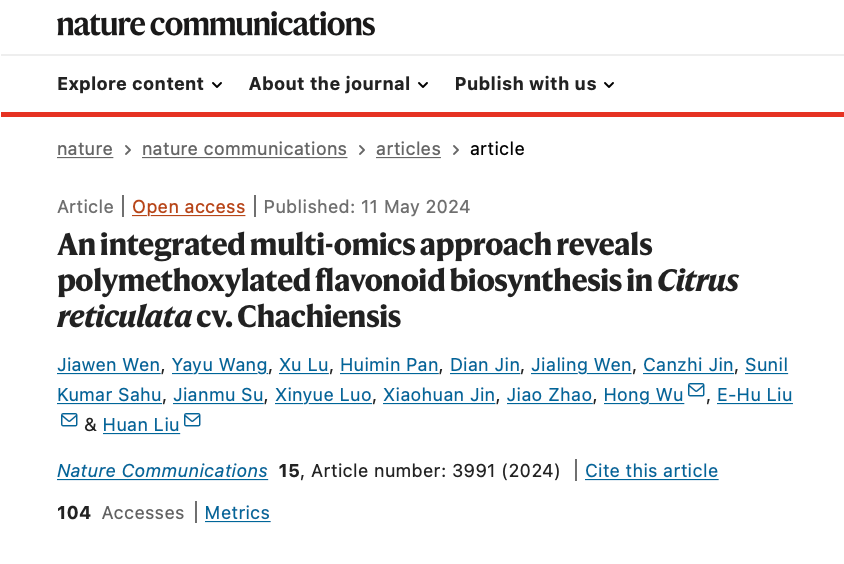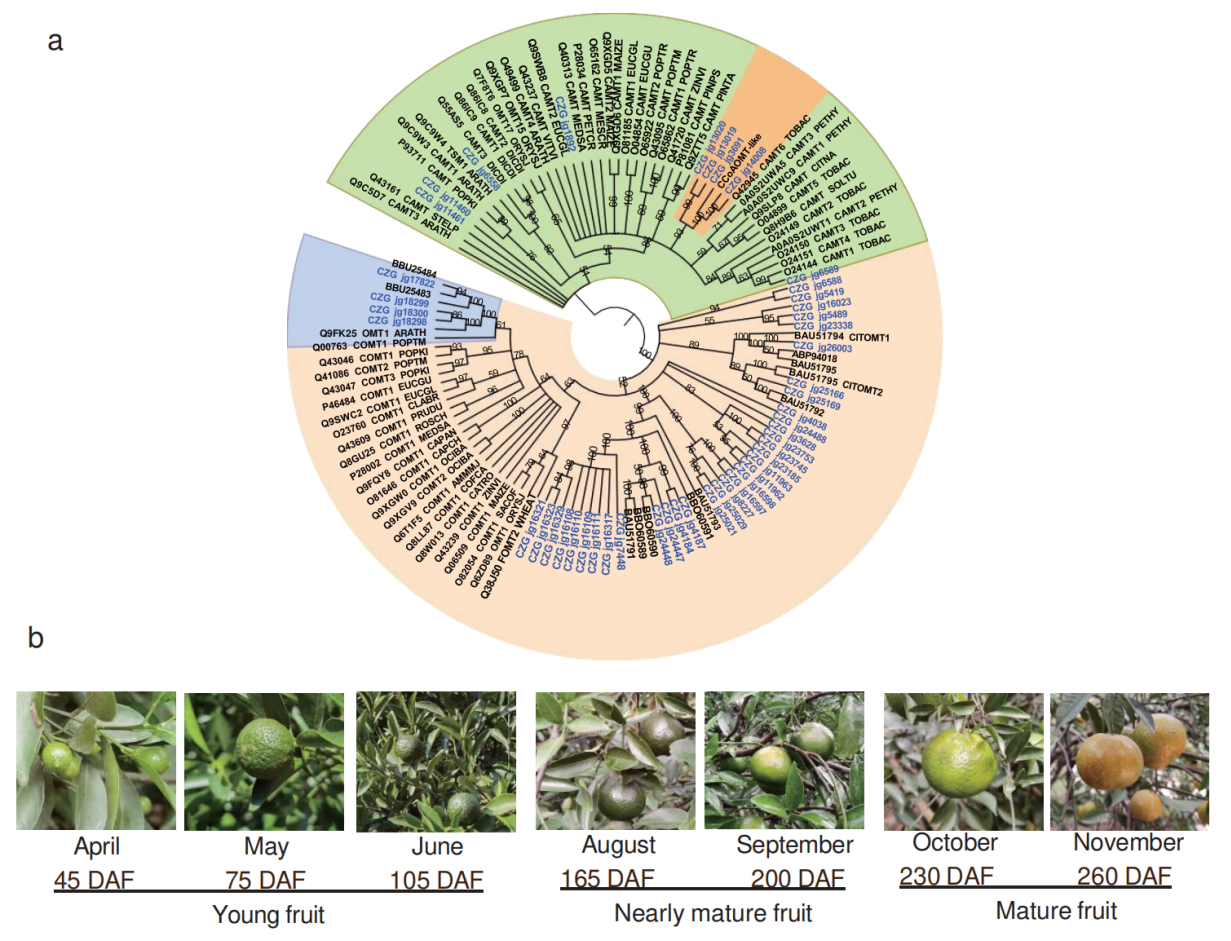Chachi mandarin (Citrus reticulata cv. Chachiensis), cultivated for over 700 years in Xinhui, Guangdong, China, is more than just a fruit; it's a vital component of traditional Chinese medicine. Known locally as "Guangchenpi," its peels are highly valued in herbal medicine for their ability to regulate bodily functions and combat various ailments. These peels are rich in bioactive substances like flavonoids and terpenoids, with polymethoxylated flavonoids (PMFs) standing out due to their significant medicinal properties.
Despite their historical usage, the genetic pathways and regulatory mechanisms underlying the biosynthesis of these PMFs in Chachi mandarin were not well understood until recently. A ground breaking study conducted by the BGI-Research, in collaboration with South China Agricultural University, China Pharmaceutical University, and Nanjing University of Chinese Medicine, has shed light on these complex processes. This study was published in May 11 in Nature Communications.
 The research “An intergrated multi-omics approach reveals polymethoxylated flavonoid biosynthesis in Cirtus reticulata cv. Chachiensis” was published in Nature Communications.
The research “An intergrated multi-omics approach reveals polymethoxylated flavonoid biosynthesis in Cirtus reticulata cv. Chachiensis” was published in Nature Communications.
The research team utilized advanced multi-omics technologies to decode the Chachi mandarin genome, revealing not just the pathways involved in PMF synthesis but also the regulatory networks guiding these processes. One of the pivotal discoveries was the identification of a novel gene, CcOMT1. This gene encodes a methyltransferase enzyme that catalyzes the formation of 3,5,6,7,8,3',4'-heptamethoxylated flavonoid (HPMF), a compound with notable anti-tumor-initiating activity and anti-neuroinflammatory properties.
Genetic Blueprint and Methylation: Keys to Medicinal Properties
By employing a combination of short-read and long-read sequencing techniques, alongside Hi-C assisted assembly, researchers constructed a high-resolution genomic map for Chachi mandarin, encompassing 29,722 protein-coding genes. This map not only enhanced our understanding of the mandarin’s genetic makeup but also emphasized its close relationship with other citrus varieties like the Clementine.
The study highlighted the role of methyltransferases, enzymes critical for attaching methoxy groups to the flavonoid skeletons, thereby creating PMFs. These enzymes were found in abundance across the Chachi mandarin genome, indicating a naturally rich potential for PMF synthesis.
 Map of Chachi mandarin genome
Map of Chachi mandarin genome
Seasonal Variations in PMF Concentrations
Further investigations focused on how PMF concentrations varied across different developmental stages of the orange. Researchers discovered that the levels of these compounds peaked approximately 200 days after flowering, around September, which is the optimal time for harvesting the peels.
 Methyltransferase genes of Chachi orange and tissue samples from different developmental stages of Chachi orange
Methyltransferase genes of Chachi orange and tissue samples from different developmental stages of Chachi orange
Discovery of CcOMT1 and Its Role in PMF Biosynthesis
The heptamethoxylated flavonoid (HPMF) is recognized for its potential in cancer prevention, yet its biosynthetic pathway was not fully understood until recent studies. Researchers observed a strong correlation between the concentrations of natsudaidain, a related hexamethoxylated flavonoid, and HPMF, suggesting that methylation of natsudaidain leads to HPMF production. This hypothesis was supported by the identification and functional analysis of the methyltransferase enzyme CcOMT1, which has been shown to catalyze HPMF synthesis. Confirmatory in vivo experiments demonstrated that CcOMT1 significantly impacts HPMF levels in Chachi mandarin peels, indicating its key role in the biosynthesis of HPMF and marking it as the first enzyme known to directly synthesize HPMF.
 Biosynthetic pathway of 3,5,6,7,8,3',4'-heptamethoxylated flavonoid (HPMF)
Biosynthetic pathway of 3,5,6,7,8,3',4'-heptamethoxylated flavonoid (HPMF)
Environmental Influence on Gene Expression
The research also explored how environmental factors like drought and salinity impact gene expression, particularly genes involved in PMF biosynthesis. Chachi mandarins thrive in Xinhui’s unique saline conditions, which appear to activate specific transcription factors more robustly compared to other regions. These factors play a crucial role in enhancing the synthesis of PMFs, thereby contributing to the superior quality of Guangchenpi produced in this authentic region.
Implications for Medicinal Plant Research
This study, which integrates multi-omics data, accelerates the mining of genetic resources in medicinal plants, providing a solid theoretical basis for genome-assisted breeding, synthetic biology of active components, and quality assurance and improvement of medicinal materials. This research follows the team's previous publication in March 2023 in the journal Microbiome, which analyzed the influence of microorganisms and soil nutrients on the accumulation of terpenes in Chachi mandarin, further elucidating the genetic regulatory mechanisms for the biosynthesis of polymethoxylated flavonoids in Chachi mandarin.
Read the research article: https://www.nature.com/articles/s41467-024-48235-y



